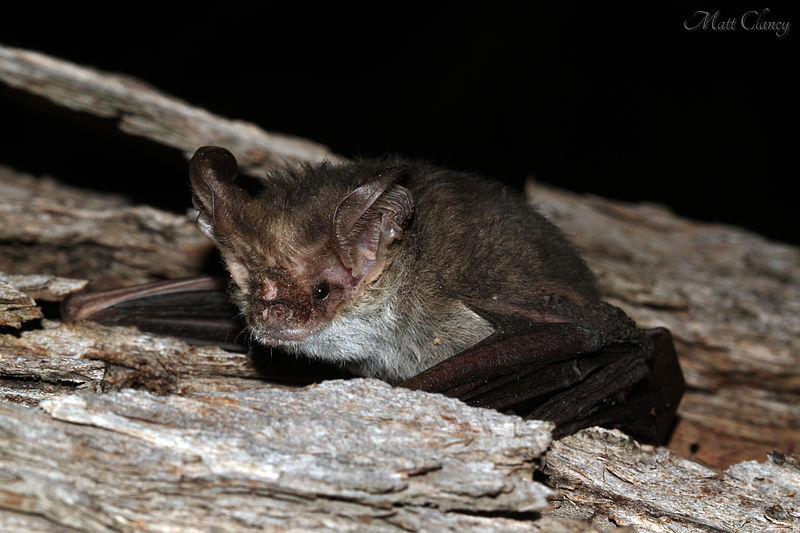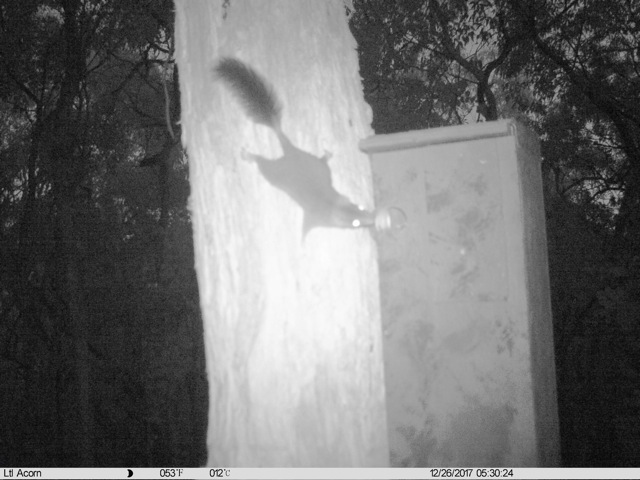A batty visitor to a phascogale nest box
Posted on 4 January, 2018 by Tanya Loos
Elevated Plains landholder, Richard Pleasance sent us some fantastic video footage of a small bat or microbat visiting his nest box. I posted the footage online to the Field Naturalists Club of Victoria Facebook page and a bat expert identified the bat as a type of long-eared bat; either a Lesser Long-eared or a Gould’s Long-eared bat, both of which are common in this area. Please click on the link below to view the bat movie – the bat arrives several seconds in…
These two bat species live on insects, and use their incredible ears and skills in echolocation help them locate crickets, moths, grasshoppers and other prey. Both species roost in a range of locations, such as peeling bark, small hollows and, in the case of Lesser Long-eared bats, disused Fairy Martin nests, old coats or under piles of bricks in sheds! Come breeding season, the females live in maternity colonies, which may be in hollow trees or sometimes in houses.
This bat was probably a single male, as they often roost alone. Richard built the box himself, using recycled materials, with the aim of attracting Brush-tailed Phascogales. Below is a photo of a phascogale inspecting the box. According to Richard ‘the box is on a stringy bark located in lovely bush close to a ridge but still a bit protected from weather’ and it faces south east.
Richard doesn’t carry out any manual inspections of his nest boxes, preferring to set up wildlife cameras to monitor usage. This is a great option as it is safer than using a ladder to inspect, and minimises disturbance to the creatures within. And there is more! This nest box was also visited by a third species: a Sugar Glider (see below).
If you would like to monitor your nest boxes this summer, you could try wildlife cameras. We have a small number at the office to lend to landholders, or you could try another non-invasive technique known as stagwatching. A stag is an old dead tree with hollows, but the stagwatching process may be used to check nest boxes too. Stagwatching involves using the natural light at dusk to check the box usage, simply by waiting quietly by the box for some time. A very meditative experience, provided you cover up adequately against mosquitoes!
To found out more about nest boxes and how to stagwatch, see our website here and download the guide: NestboxFieldGuide
Many thanks to Richard for the wonderful footage and photos.









Leave a Reply